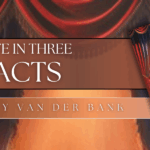By Maya Robinson
In the dynamic world of investing, navigating the myriad of fund options can be daunting. Open-ended and closed-ended funds represent two significant categories, each offering distinct pathways for investors seeking to grow their wealth. Open-ended funds, known for their fluidity, allow for continuous investment and redemption by investors, thereby adjusting the fund’s capital pool dynamically. Conversely, closed-ended funds present a fixed investment landscape, with a set number of shares issued through an initial public offering (IPO) that subsequently trade on stock exchanges.
Attorney Matt Melville supports clients in the finance sector and understands that this fundamental structural difference impacts more than the liquidity and investment strategies associated with each fund type. It also influences their market behavior, risk profile, and potential returns. Melville lends his unique insight from a legal lens to the exploration of these fund structures, seeking to demystify their complexities and showcasing their pros and cons to enable investors to align their choices with their financial objectives and risk tolerance.
What Are Open-Ended Funds?
Open-ended funds are a cornerstone of the investment fund landscape, designed with adaptability and investor accessibility in mind. Central to their structure is the capability to issue an unlimited number of shares, a feature that directly aligns the fund’s size with investor demand. This dynamic mechanism allows for the entry and exit of capital with relative ease, offering a level of liquidity appealing to a wide range of investors. The pricing of these funds is anchored in the Net Asset Value (NAV), a critical metric calculated by deducting the fund’s liabilities from its total assets and then dividing by the number of shares outstanding.
“This calculation ensures that the share price accurately reflects the fund’s per-share market value at the end of each trading day,” says Matt Melville, founder of Melville Law. “Such a pricing mechanism, coupled with the ability to buy and sell shares directly with the fund, provides a straightforward and transparent investment process, making open-ended funds a popular choice among individual and institutional investors alike.”

The Advantages and Disadvantages of Open-Ended Funds
Open-ended funds offer several advantages, chief among them liquidity. Investors have the flexibility to buy or sell shares at the end of the trading day based on the fund’s net asset value (NAV), facilitating easier entry and exit strategies. This liquidity is particularly advantageous during volatile market conditions, allowing investors to react promptly to changes.
Notes Matt Melville, “These funds tend to exhibit lower volatility compared to their closed-ended counterparts, given their ability to adjust the pool of assets as investors come and go, providing a more stable investment environment.”
The structure of open-ended funds also introduces certain disadvantages. The daily pricing mechanism, while offering transparency, means that investors are subject to the end-of-day NAV for transactions, potentially missing out on intraday price movements. The requirement for these funds to maintain cash reserves to facilitate redemptions can dilute investment returns. This cash component, necessary for operational flexibility, means that not all of an investor’s capital is working in the market, possibly leading to lower potential returns compared to fully invested alternatives. Balancing these pros and cons is crucial for investors considering open-ended funds for their portfolios.
Understanding Closed-Ended Funds
Closed-ended funds are an integral part of the investment landscape, distinguished by their fixed capital structure. Unlike their open-ended counterparts, these funds issue a predetermined number of shares through an Initial Public Offering (IPO), after which shares are traded on stock exchanges similar to stocks. This fixed share structure means that the capital pool of closed-ended funds remains constant, unaffected by daily investor transactions. Consequently, the share price of closed-ended funds is not directly tied to the fund’s net asset value (NAV) but is instead determined by the forces of market supply and demand.
As a result, shares of closed-ended funds can trade at a premium or discount to their NAV, offering unique opportunities and risks. This market-driven pricing mechanism introduces an added layer of complexity and potential for arbitrage, as investors can buy shares at a discount or sell at a premium relative to the underlying asset value. Understanding the nuances of closed-ended funds, including their trading characteristics and how they diverge from open-ended fund pricing, is essential for investors looking to navigate this segment of the market.
The Benefits and Drawbacks of Closed-Ended Funds
Closed-ended funds come with a unique set of benefits, one of which being the potential for higher returns. Since these funds operate with a fixed number of shares, managers can fully invest their capital without needing to keep cash on hand for redemptions.
“This allows for a more strategic, long-term investment approach, including opportunities in less liquid markets that may offer higher yields,” says Melville.
The ability to purchase shares at a discount to the net asset value (NAV) can enhance investor returns if those discounts narrow over time. These advantages come with certain drawbacks. The liquidity of closed-ended funds can be a double-edged sword; while shares trade on stock exchanges, their liquidity is contingent upon market demand, which can lead to volatility in share prices.
Such volatility is further compounded by the fact that shares can trade at significant premiums or discounts to NAV. Additionally, many closed-ended funds employ leverage to amplify returns, a strategy that can equally amplify losses, adding a layer of risk that investors must carefully consider. Navigating the benefits and drawbacks of closed-ended funds requires a nuanced understanding of their operational mechanics and market behavior.
Published by: Khy Talara

















